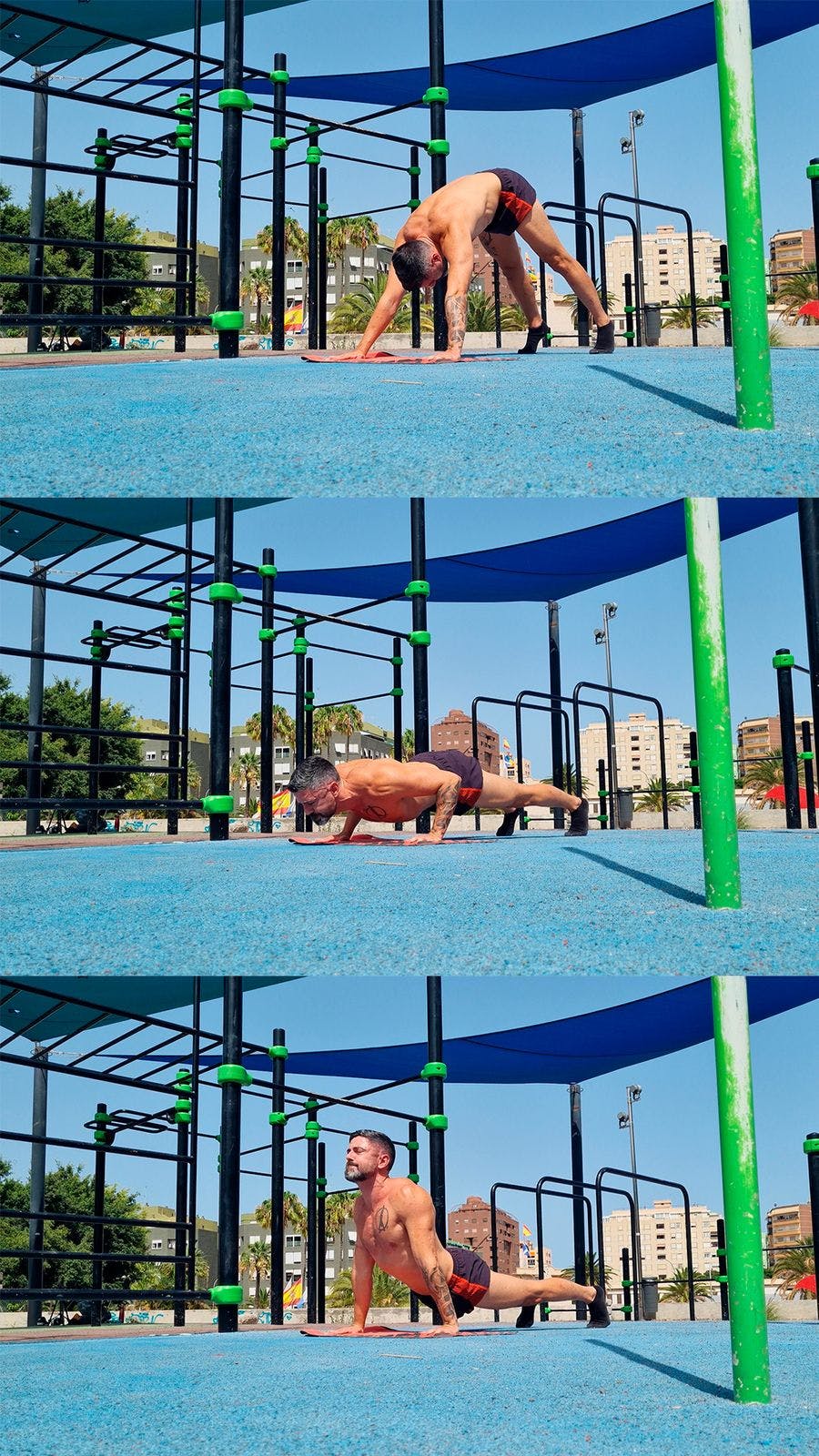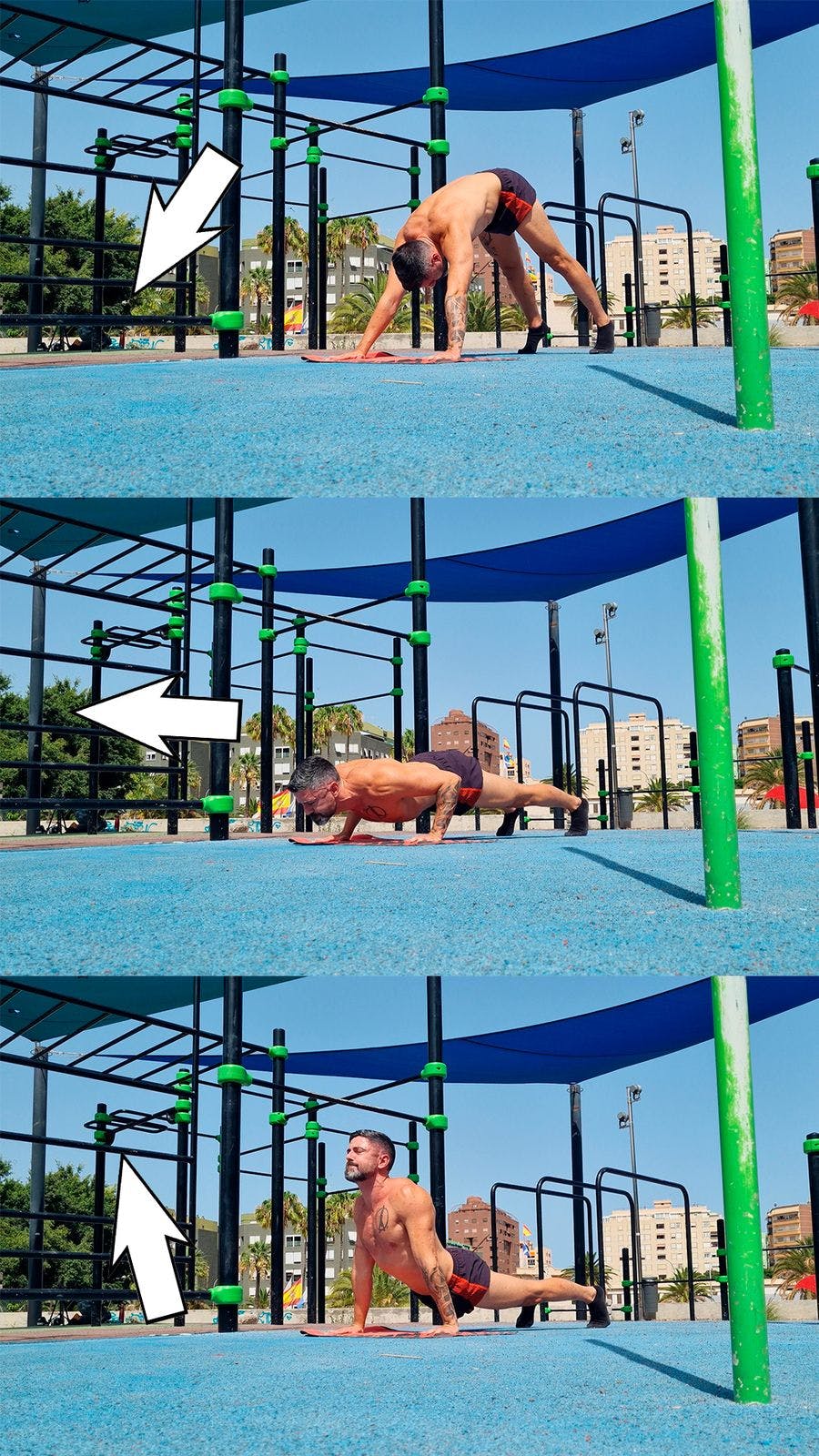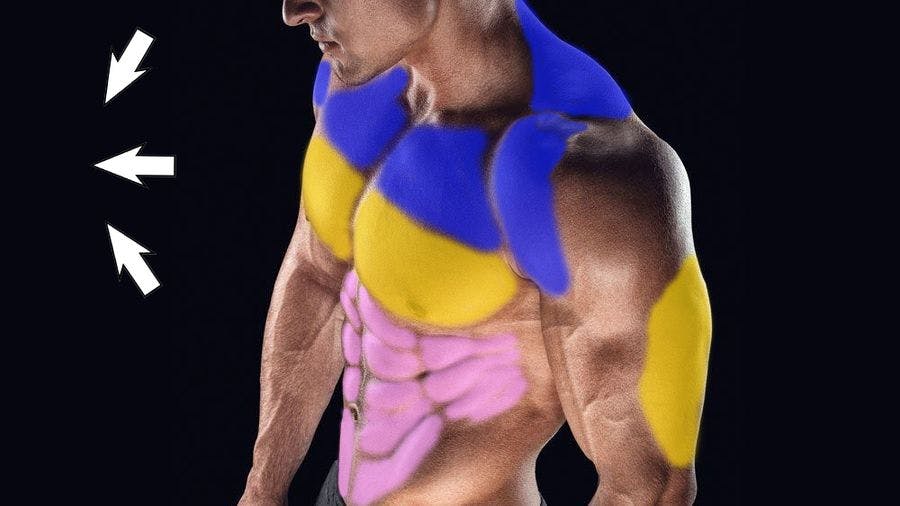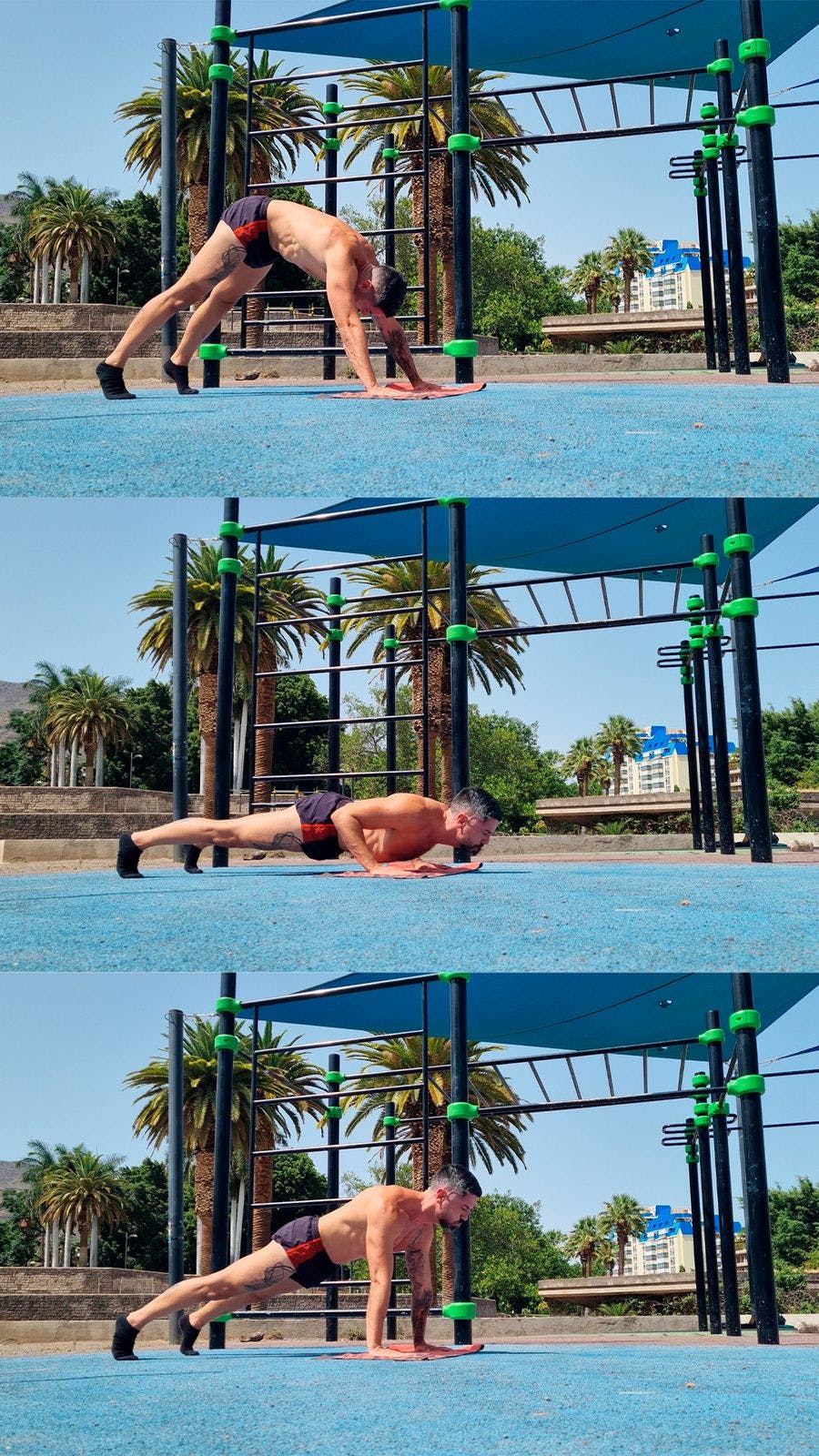
Today I want to talk about an exercise that seems to me to be one of the best for the upper body, but it has a small peculiarity.
There are certain exercises that generate a love-hate relationship with those who do them. For example, in the case of the legs, I think that exercise is clearly the Bulgarian squat. Many people hate them because they are quite difficult, they are a bit awkward to perform and they leave you really tired, but at the same time they love them precisely because being so difficult and intense they are very effective and give good results.
The same goes for our hero today, the Hindu push up.

Biomechanics of the hindu push ups
The Hindu push up comprises a complex movement that combines a traditional flexo-extension of the arms in push-ups with a flexo-extension of the hip. This causes the angle of our torso to change with respect to the arms during the movement.

At the beginning of the movement we have a pike push ups angle, more focused on the shoulders and the upper part of the pectoral, and when we reach the point of maximum flexion we have a traditional push up angle, or an arched-back push up depending on the technique we are using, which would focus more on the lower part of the pectoral.
Finally, throughout this movement there is triceps work and a more residual part for the upper trapezius, serratus, abdominals and hip flexors.

As we can see, the main characteristic of the hindu push ups is to combine the different classic pectoral work angles, which in calisthenics we usually do with inclined push-ups, bar dips, parallel dips, traditional push-ups, decline push-ups, pike push ups or handstand push-ups.
In addition, like the Bulgarian, they have that slight touch of discomfort in the execution and extra difficulty that makes the work more intense than it might seem and that with a moderate number of repetitions you get a quite powerful stimulus.
Techniques of execution for the hindu push up
The most common execution of the hindu is with the legs slightly open and arching the back at the end of the movement. As we have discussed on other occasions, if you do not have problems in the lower back and you are not going to perform a huge number of repetitions, there should not be any problem with this execution.
But anyways, if you want to be 100% sure not to force the lower back, I recommend this other way of doing them, which avoids arching your back. This is the technique that I personally do since in the past I have had problems in the lower back:

For beginners we have a variant that can be used as a progression and that consists of performing hip flexion once we have already extended our arms, which makes this part of the movement much easier. In normal hindu you "go back the way you came" so to speak, and in beginners you come back by raising your hips without moving your arms.
Another variant for beginners would be with the knees supported and also another way to facilitate the exercise is by bending the knees.

For advanced athletes, we can do them with our feet up or with grips that allow us to go down a little more, or a combination of both options.
Finally, there is another execution that is with the legs much more open and that makes you arch your back even more. The only advantage that I see to this technique is that it allows the movement to be much more fluid, but personally I don't see any more reason to do it like this.
The key points for execution are:
1. Find the optimal distance between legs and hands. If they are too close you will not be able to perform the movement correctly and if they are too far you will have almost no inclination, therefore it is important that you find the correct distance.
2. Learn movement coordination. Sometimes in beginners it can be difficult to coordinate the extension of the arms with the hip flexion and that can mean that even if you have enough strength you cannot do them
3. Value quality over quantity. Do not execute them quickly, avoid inertia or swinging and do not sacrifice technique.
How to integrate the hindu push up into your training
Depending on the objective you have and the distribution of training that you follow, the hindu can fit you on shoulder's day, ùshing day, planche day... Almost always as an exercise for the intermediate or final part of the routine, to give a good stimulus to the muscles involved.
Normally with series of between 6 and 15 repetitions you will do quite well in intensity, but if you need more or less difficulty you can use the techniques that we discussed in the previous section.
Examples of routines with hindu push up
My discovery of the beauty, magnificence and love hate of Hindu push ups comes from the shoulder challenges that we have done in Calisteniapp, the first one was a few years ago and perhaps I went a bit too far with the number of series and repetitions that I programmed in it, which made the hate part much more prevalent than the love part among those who did it.
But I think it was also one of the key factors for the good results that that challenge gave us. Now we have just finished version two of this challenge and this time I programmed it a little more carefully with respect to the number of reps for the Hindu not being excessive, and the truth is that I think those who did the challenge will agree with me that we have enjoyed them much more. Now in the coming weeks we will see the results for that effort.
So if you want to train with this exercise, the shoulder challenge would be a good option. Besides, in the sessions section, if you filter by shoulder training you have a good number of free routines that include this exercise. You can take a look at this link.
I hope this article serves you and you learn to enjoy this exercise.
Autor

Yerai Alonso
Cofundador de Calisteniapp, referente en calistenia y el street workout en Español. Con más de una década de experiencia, es creador de uno de los canales de YouTube más influyentes del sector. Autor del libro La calle es tu gimnasio, campeón de Canarias y jurado en competiciones nacionales e internacionales.
Junte-se ao nosso boletim informativo
NOVOS ARTIGOS TODA SEMANA
Aprenda tudo o que precisa saber sobre calistenia
Calisteniapp
Comece a treinar calistenia e treino de rua
